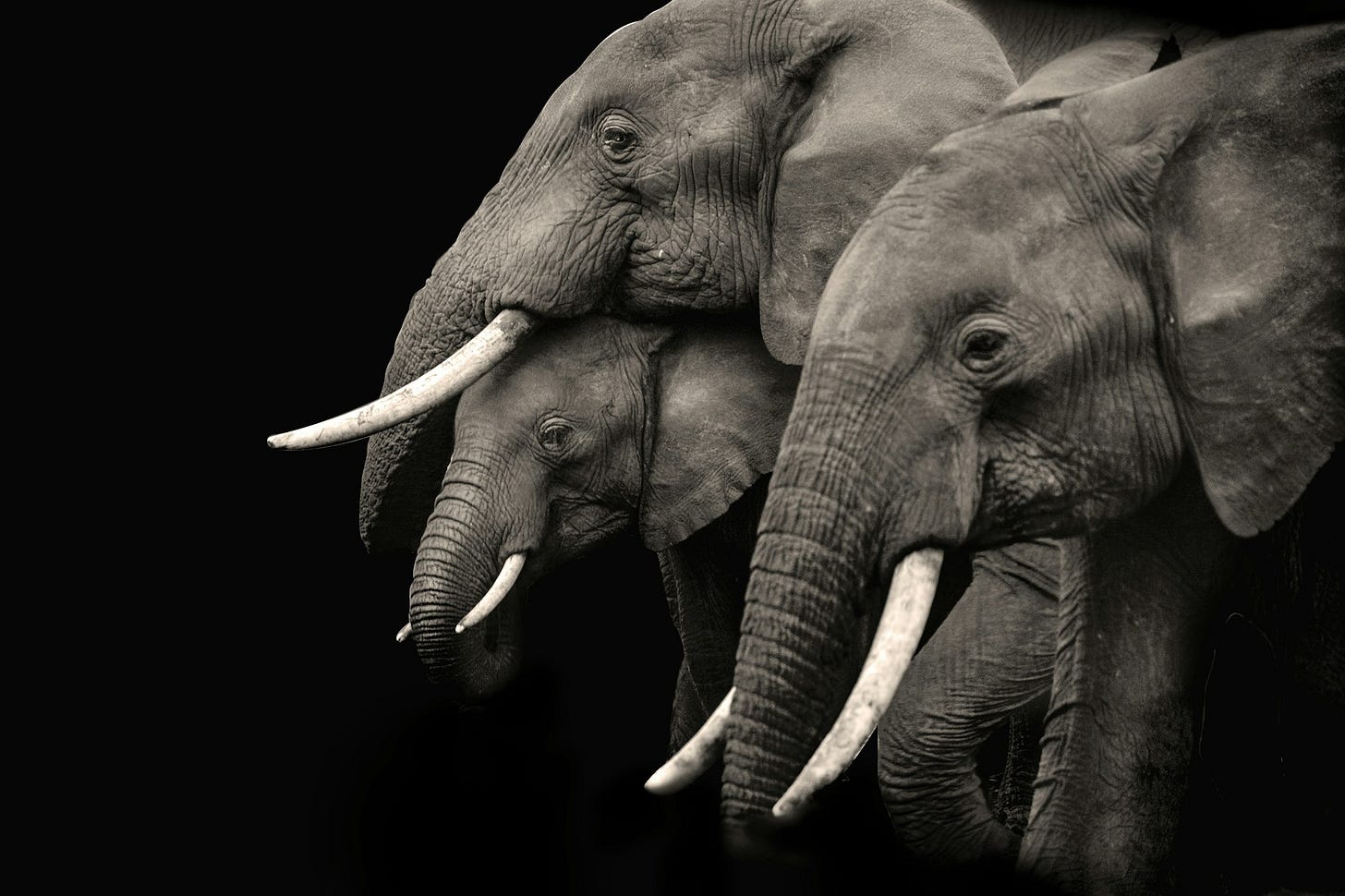There are no “anatomically modern” elephants. Why do we treat humans differently?
A quote from Phillip Tobias illustrates the strange way that we talk about human variation compared to other species.

In the field of human evolution, every so often a scientist will note the absurdity of talking about “anatomically modern humans”. Biologists don’t talk about other kinds of animals as “anatomically modern”. The words carry a connotation of end-directed evolutionary progress that is not compatible with the way that genetic change works in populations.
The first person I know to have emphasized this point was Phillip Tobias. Tobias contributed a chapter to the volume edited by Sydney Brenner and Kazuro Hanihara in 1995, Origin And Past Of Modern Humans As Viewed From DNA, in which he challenged the term “anatomically modern humans”. Tobias in this chapter more or less espoused the view of Wolpoff (1986), citing him directly in this passage:
First, it is important to stress that some recent and modern human beings do not have smooth brows. Prominent among the exceptions are the heavily-browed crania of Aboriginal Australians. Similar cranial forms are encountered among some recent peoples of India, Sri-Lanka [sic] and Indonesia (Wajak). Also exceptional are a number of protohistoric South African crania (e.g., Bayville, Cape Flats, Canteen Koppie, Ladybrand, Mistkraal and Zuurberg), whose brow ridges were so prominent as to lead Drennan (1937) and Wells (1952) to dub them (unacceptably) “australoid” or “proto-australoid” respectively. Attempts to arrive at a morphological definition of the so-called “anatomically modern man” (Day and Stringer 1982, Stringer and Andrews 1988) failed in that the formulations excluded these modern humans of Australia, Asia, and Africa. Clearly one does not need a smooth brow to be a modern human being. As Kennedy (1992) has pointed out, there is as yet no consensus on what the autapomorphies of modern humans are, while Kidder et al. (1992: 175) conclude, from a multivariate study of crania, that the formulating of a definition of modern Homo sapiens “is not yet possible even for European and Near Eastern samples”. Yet many investigators have continued to use this term, “anatomically modern humans”, as though it could be applied to all living and recent human beings, that is, to all members of the living subspecies H. sapiens sapiens. This author pleads guilty to using the term unthinkingly not long ago (Tobias 1992). If the term cannot be defined it should be discarded (Wolpoff 1986). Instead of speaking of “anatomically modern human beings”, we should speak of “modern” or “recent” humans, using a temporal not a morphological descriptor (Tobias 1993a). After all, we are not in the habit of speaking of “anatomically modern elephants” or “anatomically modern hippopotami”!
The term “modern humans” really did originate in the late 19th century at a time when biologists and anthropologists took seriously the idea of end-directed evolutionary process.
Today’s evidence makes it clear that the genetic ancestry of living people comes mainly from African populations that had come to be separated by 300,000 years ago, with smaller components from Neandertals, Denisovans, and other populations that existed much earlier, separating from each other before 600,000 years ago.
The earliest fossils that anthropologists have described as “modern” in their anatomical features represent individuals that lived later, the earliest now being the Apidima 1 posterior cranial specimen from around 210,000 years ago. There remains much debate about what combination of anatomical features to recognize as “modern”. Specimens like Apidima 1, the maxilla from Misliya Cave, Israel, and the Zhiren Cave mandible from China show that “modern” morphological patterns existed in Eurasia much earlier than anthropologists imagined only 10 years ago. These specimens may be “anatomically modern” but possibly have little to do with the ancestry of today’s people. Two of them have been found at times and places where they were clearly succeeded by Neandertals. That complex biogeographic patterning—with a large possible contribution of African-derived populations to Neandertals in West Asia and Europe—is the opposite of an end-directed progression toward living people.
Paleoanthropologists need to come to grips with these patterns and come up with better terminology to describe the anatomical and genetic similarities between groups.

